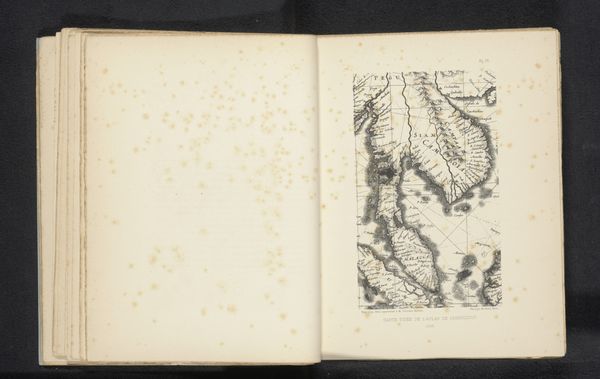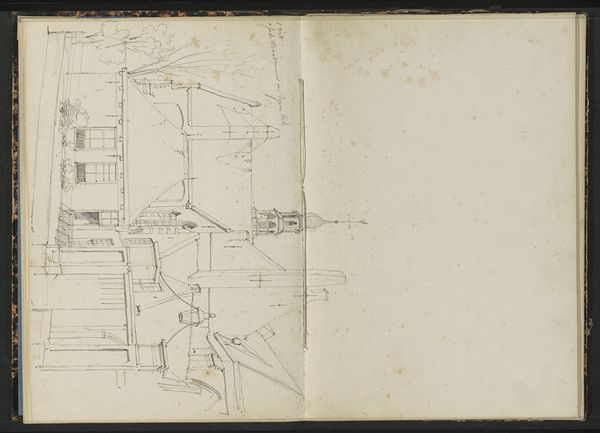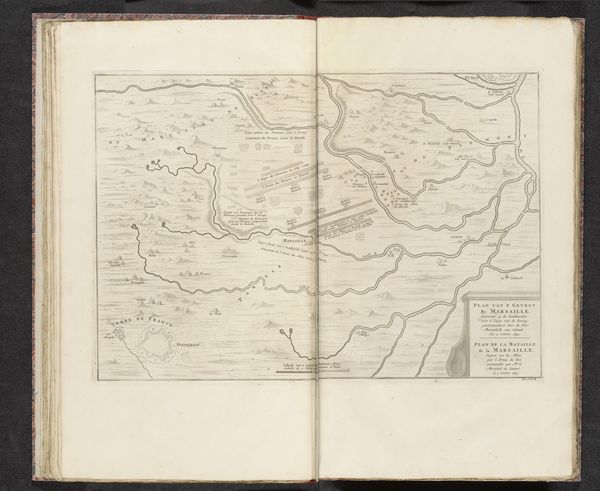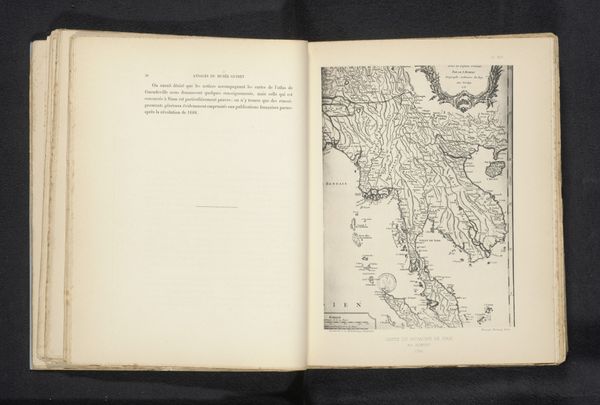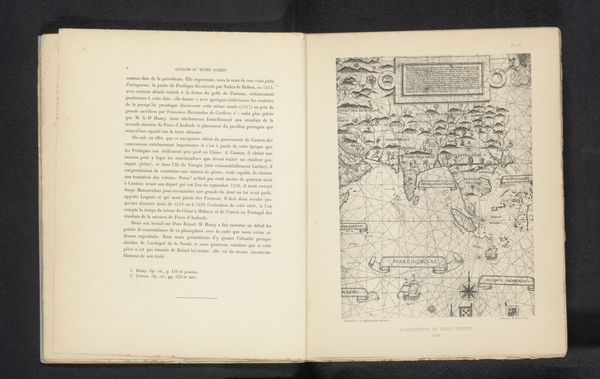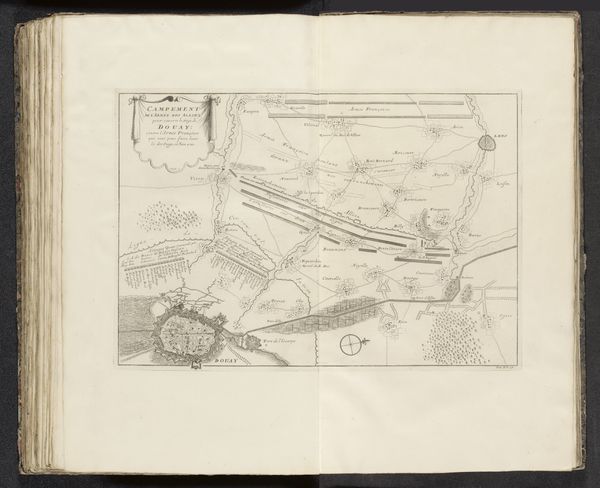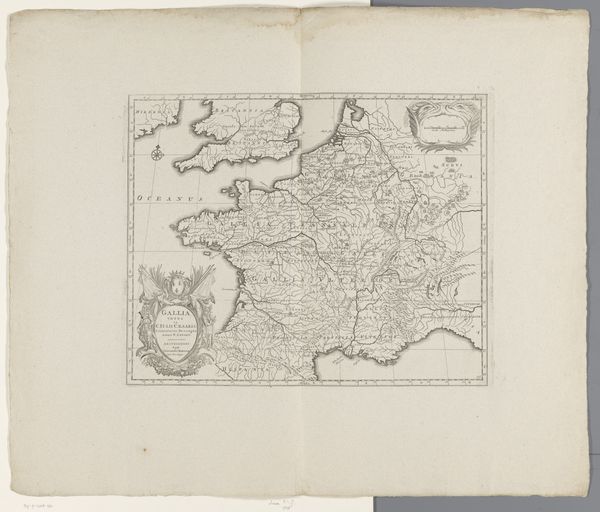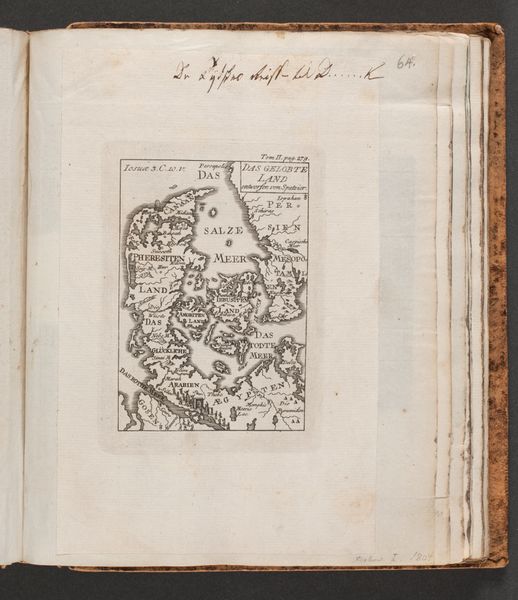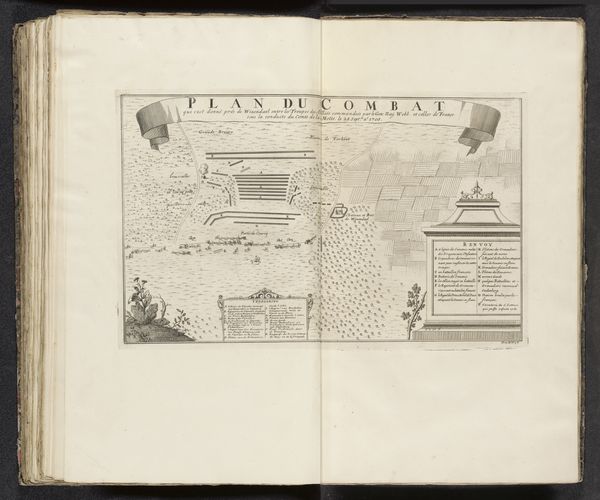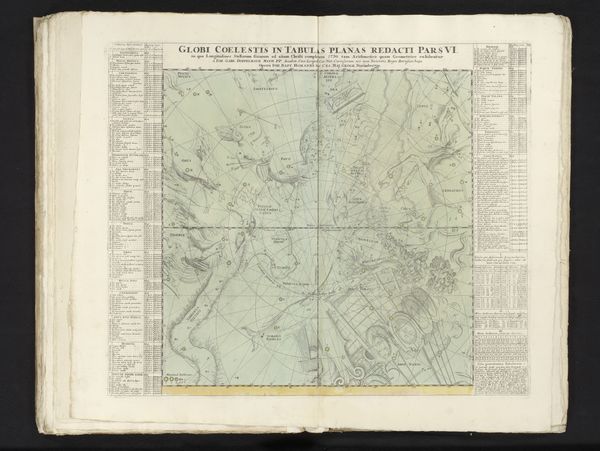
drawing, graphic-art, print, paper, engraving
#
drawing
#
graphic-art
# print
#
paper
#
engraving
Dimensions: height 148 mm, width 203 mm
Copyright: Rijks Museum: Open Domain
Editor: So, here we have "Reproductie van een kaart van de Golf van Thailand en de Menam," which translates to "Reproduction of a map of the Gulf of Thailand and the Menam River," created before 1895 by Michel Berthaud. It's an engraving printed on paper, quite aged, almost like a page ripped from an old geography textbook. What do you see in it? Curator: Well, considering the date and the material - an engraved print on paper - I immediately think about the labour involved. Look at the fine lines, the precision. This wasn't mass-produced digitally. It required a skilled artisan meticulously etching the design, a tangible act of labour that directly connects to the processes of map-making and colonialism at that time. It's a product of a very specific social and material condition. Editor: Colonialism, interesting! So the map isn’t just a depiction of geography; it's…something else? Curator: Exactly. Maps are never neutral. They’re tools of power. The production of this map—who commissioned it, for what purpose, how it was distributed—all these material conditions are key to understanding its cultural function. How does representing territory influence its ownership? Editor: I hadn't considered that before, thinking about it as purely informational. So you’re saying, even something that seems utilitarian like a map can reveal inequalities and power dynamics baked into its creation? Curator: Absolutely. The very act of mapping a territory is an assertion of control. It presupposes a claim, it enables resource extraction, and influences governance, directly connecting materiality with social and economic frameworks. It is worth questioning what perspectives are presented, and what and whose stories were disregarded when deciding what to print, and how. Editor: So much to think about. It makes you wonder about all the steps involved – from the explorer charting the territory, to the engraver crafting the printing plates. Thank you for your fresh take on art objects and historical accounts. Curator: Likewise. Examining the tangible stuff helps unpack complex ideas.
Comments
No comments
Be the first to comment and join the conversation on the ultimate creative platform.


